Three ways mindfulness can help your wellbeing
1. To cool down under pressure
This is an instant effect, and very useful in moments of anxiety or frustration. Slowing your breathing and noticing what you feel right now speaks to your nervous system, and switches it from ‘fight or flight’ mode, to a more relaxed state.
2. To train your brain to focus
This is a long term effect. When we train our brains to not worry about the past or future this helps with attention and focus, it also helps us learn to not react without thinking. It calms the often negative chatter in our minds, helps us make wise choices and build resilience.
3. To connect with each other and with life more fully
To understand, express and accept feelings, in ourselves and others. To connect with others compassionately and learn self-compassion. To be in the moment, and encourage a sense of wonder and curiosity, and appreciate the little things (which adds up to a happier life).
Understanding mindfulness
What is mindfulness?
What does mindfulness mean for children?
How does it work?
It’s a lot more ‘solid’ and physical than it sounds, and it all comes down to the place where our minds and bodies relate - the nervous system.
Our nervous systems coordinate how we react to the world. A lot of the time, they’re operating of their own accord, deciding when to release chemicals that make us feel happy, or angry or worried.
Through years of evolution, our brains have been trained to prioritise looking out for danger. This was a very useful survival mechanism when we were being chased by lions. But these days, with no lion chases to worry about, our brains react in the same way to very non-threatening situations - like if someone says something mean to us, or if we open an email we’re not happy about. The exact same chemicals flood our brains and switch our brains from sensible mode to survival mode. Our heart rates go up, we breathe faster, and our bodies are ready for fight or flight.
Our brains sometimes trick us into thinking things are a lot worse than they are - they’re trying to help, but it’s not helpful. The next video explains it in a bit more detail.
A Map of Our Brains
The Super Smart Science of Neuroplasticity
You know the old saying, ‘you can’t teach an old dog new tricks’. Well, turns out that you can! For a long time, scientists believed that your brain stopped developing in adulthood. But in the 1960s they started agreeing that our brains don’t ever stop developing. That means, if you’ve always behaved one way (e.g. you worry a lot, or you think negatively as a habit), you can physically change it!
The neurons in our brains create pathways from one place to another. These paths become clearer and deeper the more they’re used, like a pathway that gets walked every day. With short, everyday mindfulness practise, we can rewire our brains to be more positive and calm. We create new pathways, and whilst they may feel like unfamiliar back-roads to start with, with regular practise they turn into super-highways.
We need to cultivate ‘mind strengths’ (such as calm, contentment and caring) to create these new neural pathways. Adding more and more moments of these positive traits to your brain eventually changes the way it works. Our old habits of reacting quickly, or letting our minds chatter negatively to us all day long, slowly get replaced and repaired.
Mindfulness and connection/ belonging
Once we realise that our mental patterns are a shared human experience, we feel less alone. We’re able to see that we’re not broken or different and to share how this feels with others. Children, educators, and parents all experience the same phenomenon of mental chatter, difficult emotions and the ups and downs of daily life - we have more in common than we think.
We learn to face these with compassion in ourselves and others. We are able to mindfully notice the effect that words and actions have on others, as well as act compassionately to those going through a tough time.
The Pause
Learning Mindfulness
Tips for Getting Started
Your mindfulness plan
Consistency is key in forming a regular practice, here's how to do it:
- Add it to the daily schedule – think of three times a day - it only needs to be a few minutes each time. Download the 'Family Mindfulness Plan' and complete it with your child.
- The plan includes one session in the morning, 1-3 'habitual check-ins' during a habitual activity (e.g. brushing teeth, the first few bites of dinner, or having a drink of water), and one before bed.
- Do these exercises together, but you might want to do your own practise once a day (maybe your before bed practise). This allows you to develop it into a longer meditation in the future if you wish to.
- Involve your child in discussing what times of day would be good to check in to the present moment. Give children agency to come up with their own mindful solutions. Welcome children’s contributions to their own mindfulness journey.
- The best way to feel the benefits is through regularity. Don’t aim to meditate for an hour a day if that’s just not realistic for you. A few minutes at a time every day works wonders. For your own practice, aim to build it up, so that your alone session is 20 minutes a day. If you’re enjoying it, you might find yourself extending that time, or finding more opportunities to sit in silence for a while.
- There is a sticker chart at the end of the course, download one for each participant (adults too!) and pop it on your fridge or somewhere noticeable. If you don't have access to a printer, you can use it as inspiration to draw your own chart. The sticker chart is a fantastic way to engage children in the process, particularly if they're a little resistant.
- Remember to be kind to yourself, if you forget a session, or if the kids just won’t settle into it, don't stress - start again on the next session.
- If you find that the time you've picked is not really working, print out a new plan and pick a new time.
Mindful Parenting
You can model mindful behaviour at home with these tips:
- Be mindful of when you’re on your phone or device. Make sure you have time each day where there are no screens, where you are really with your child and really talk to them, with no distractions. Even better if you can play a game/ do an activity of their choice.
- Try not to get caught up in ‘what if’s’ and worst-case scenario thinking. When worries turn up, try to steer the conversation towards what is real right now, and balance worst-case scenarios with the best possible outcomes.
- When you’re out for a walk or doing day-to-day chores, tune in to what’s happening right now, instead of trying to get from one thing to the next. The immense sense of calm it brings is really rewarding.
- Model delight and wonder. Get excited about small things - an interesting bug, a beautiful tree, or a particularly good hug. Children naturally do this, but unless we show them that adults do it too, it will eventually fade away from their behaviour. Your excitement about the world around you will transfer to them. Finding delight in the small things of daily life is one of the keys to long-lasting joy.
- Slow down whenever you can.
- Model self-compassion, this is a hard one! If you make a mistake, speak kindly about yourself, instead of saying ‘I’m such an idiot for doing that’. Say, ‘it’s ok, we all make mistakes’.
- Show compassion to your children. How you speak to them becomes their inner voice for life. Things that get more attention will always flourish - so pay less attention to unwanted behaviour. Focus on their strengths and grow those.
- Talk about feelings in a way that reminds us they are temporary. E.g. instead of saying ‘I’m angry’ say, ‘I’m feeling angry right now’. This reminds us and our children that we are not our thoughts or feelings - they come and go. Speak openly about how you feel, good and bad so that your child understands that the ups and downs of emotions are absolutely normal. The next video is a story to explain this to them (and you).
Your thoughts and feelings are like clouds
How to meditate
This part scares some people, the idea of having to learn a new ‘skill’ to meditate. Luckily, you can’t really get it wrong. As long as you keep coming back to it each day, and keep trying, you’re doing it right. Even if your mind keeps wandering, the act of trying to quiet it is where the magic happens.
There are thousands of ways to do this, and you’ll settle on one that feels right for you (or you might keep mixing it up, it’s all ok). The basic idea is to try to notice what your mind and body are doing. In doing that, you train your brain not to think of the past or the future, only what is happening now.
A great way to do this is by watching your breath. We focus on our breath going in and out. Noticing the sensation of it filling our chest, and the feeling of the air leaving our nose or mouth. This gives our mind something to focus on rather than worrying about work or working out what to make for dinner.
Your mind will wander, sometimes, particularly when you’re just getting started with mindfulness, it will not stop wandering for more than a second at a time.
Try to notice your thoughts without becoming involved in them - this will become easier in time. Imagine them floating past the screen of your mind, you don't need to hold on to every thought that comes past.
Each time you notice that you’ve been thinking, gently guide your attention back to your breath. Try not to be frustrated with yourself, it can help to simply say the word ‘thinking’ to yourself and then guide your attention back to the next breath going in and out. Like training a puppy, eventually, this gentle guidance will lead to longer and longer periods of quiet, and less wandering thoughts.
Don’t expect to feel like you’ve been transported to another realm, or become instantly completely relaxed. This is a process of showing up each day and gradually benefitting more and more. Just showing up means you are doing it ‘right’.
After you have finished this series, if you want to experiment with more styles of meditation, there are a lot of apps with guided meditations, my favourite one to go to is Insight Timer.
Get started with Mini Mindful Moments.
![]()
Jen Sievers is an artist, designer, mother, and joy aficionado. She lives in the foothills of the Waitakere Mountains near Auckland, New Zealand.
Jen is inspired by colour, laughter, people, and trees. She researches joy through books, the internet, and way too many podcasts. She is unshakably optimistic and obsessed with helping others rediscover their own joy. She does this through her art, conversations, and now books.
She feels particularly called to pass her research on to young people, to set them on the path to a more joyful life. She believes teaching kindness, compassion, and mindfulness from an early age should be just as important as reading and writing.
Go to her website for more information and to download her full mindfulness course.
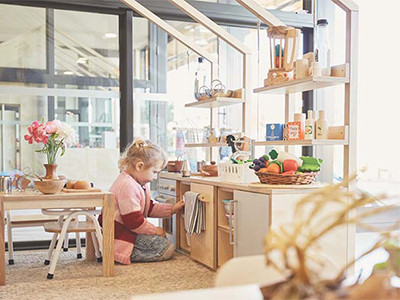
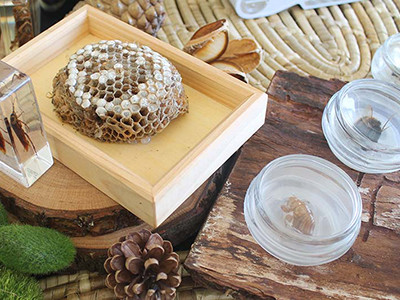
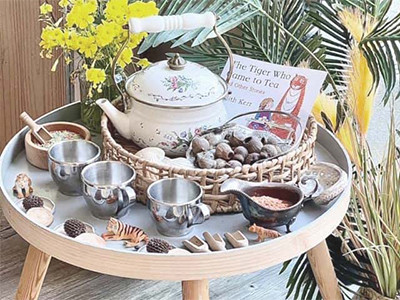
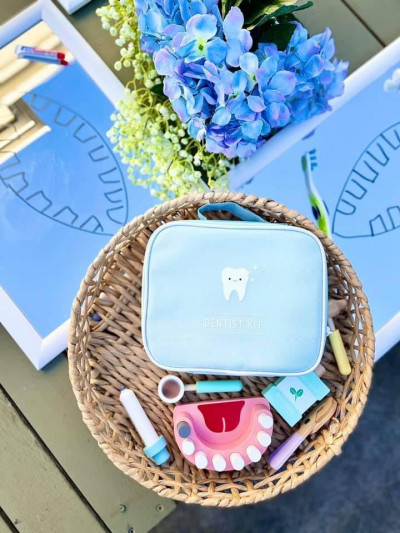
 Michelle Pratt
Michelle Pratt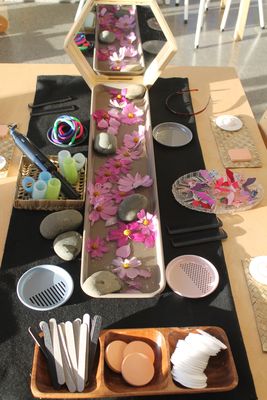
 Karyn Charles
Karyn Charles
 Jade Leigh Kelly
Jade Leigh Kelly